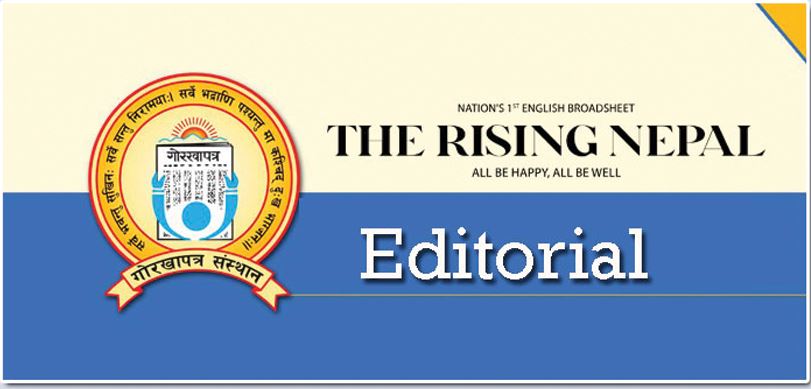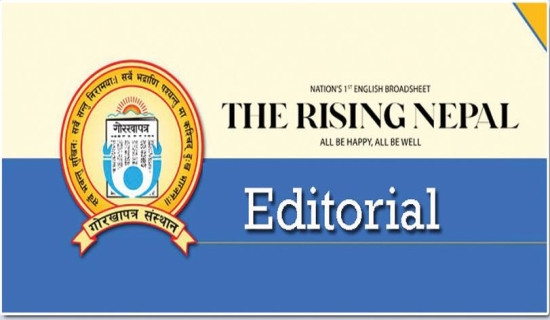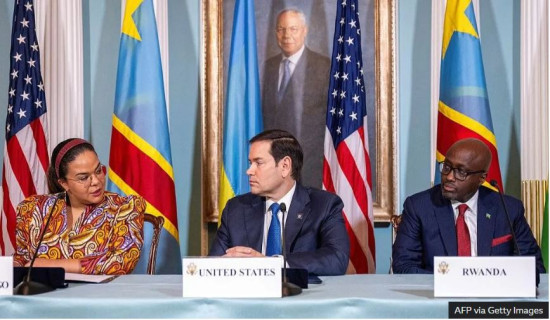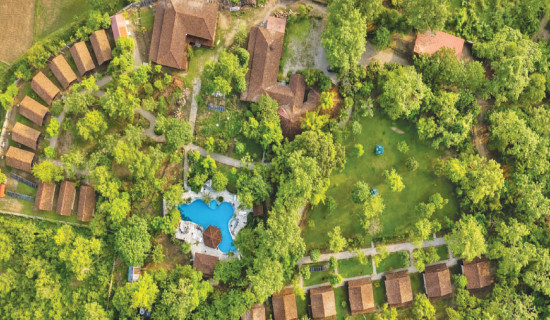- Saturday, 28 June 2025
New COVID-19 Variant
The emergence of the JN.1 variant of COVID-19 in Nepal acts as a reminder that nations worldwide are continuously struggling to combat against the virus. The occurrence of new variant, which has been seen in India and China as well, requires increased focus to address the situation. Recognition by the Ministry of Health and Population (MoHP) in recent weeks to validate its presence as supported by genomic sequencing at the National Public Health Laboratory presents a worrying reality. MoHP calls for a need to screen people at border entry points more than ever. For those vaccinated against COVID-19, JN. 1 does not seem to manifest such harsh effects on sufferers of the disease.
However, the unvaccinated and those with underlying health issues should be careful. This also emphasises the need for vaccination and continuing public health-related measures. The efforts of the MoHP to implement health standards should be praised. Once again, MoHP pleads people to follow protocols: do not go in crowded areas, keep distance between people, wear masks, and wash hands frequently. There is still a need for such measures to help in the containment of transmission, despite what the variant may be. Despite these recommendations, many have relaxed their precautions, making it challenging to convince them to reinstate these safety measures.
The World Health Organisation (WHO) has already launched a global alert, noting the growing danger that the JN.1 variant poses with this year’s increase in influenza cases. This emphasises the need for a collective global effort to fight the challenges. Even though WHO announced the end of a pandemic era, it is important to be vigilant. Appropriate and timely testing can help spot the disease early, isolating it from others before it spreads across society’s groups during such seasons when respiratory illnesses or fevers are prevalent. The identification of the JN.1 variant urges reconsideration of the strategies that were in use earlier to overcome such epidemics. The border regions are very vulnerable to the virus, as many Nepali citizens returning from India have been found positive for COVID-19.
The fact that antigen testing is obligatory at Nepal-India border points should be appreciated, but it has to undergo a reliable method for detecting the new strains of virus. With hundreds of Nepali nationals returning each day from across the border, community transmission looms as a major concern. To achieve adherence to COVID-19 protocols, returnees and local communities need to collaborate. Some of the checkpoints do not have any confirmed virus cases. Therefore, it is important that a proper, comprehensive, and consistent approach to testing as well as monitoring would be carried out.
In order to address the problems encountered by health checkpoints at the border, such as logistics and socio-economic aspects, a quick approach is needed. The control measures are effective if they have adequate resources, training, and support for health care professionals at checkpoints. Implementing mandatory antigen testing is an excellent initiative. However, it has to be combined with a good reporting system and cooperation between bordering countries. As the public health sector adjusts to challenges, coordinated efforts against the virus will be most effective.

















